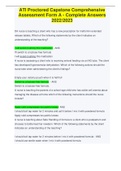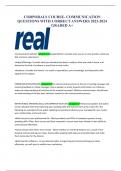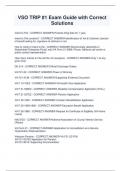Samenvatting
Samenvatting 'Statistics for the behavioral science' (Gravetter & Wallnau) hst 12, 14 t/m 17
- Vak
- Instelling
- Boek
Samenvatting van het boek 'Statistics for the behavioral science' voor het vak Methoden Technieken en Statistiek 2 (MTS2). Het betreft de hoofdstukken 12, 14, 15, 16 en 17. De voorbeelden uit het boek zijn erin verwerkt, waardoor de stof makkelijker te begrijpen is. LET OP: er staan in het documen...
[Meer zien]













